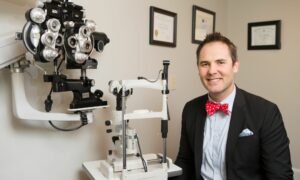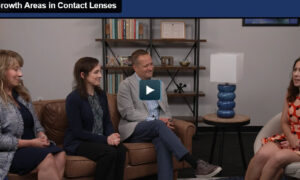 The mid-teenage years are prime time for the start of contact lens wearing, findings from Jobson Optical Research’s 2013 Contact Lens Insight Survey reveal. Some 32.8 percent of current contact lens wearers say they began wearing contacts between the ages of 15 and 18. However, the 11-14 age segment is increasingly becoming the time frame for the start of contact lens wear. In 2013, 21.3 percent say they started wearing contacts between the ages of 11 and 14. That is up from 20.5 percent in 2012, 19.6 percent in 2011 and 18.3 percent in 2010.
The mid-teenage years are prime time for the start of contact lens wearing, findings from Jobson Optical Research’s 2013 Contact Lens Insight Survey reveal. Some 32.8 percent of current contact lens wearers say they began wearing contacts between the ages of 15 and 18. However, the 11-14 age segment is increasingly becoming the time frame for the start of contact lens wear. In 2013, 21.3 percent say they started wearing contacts between the ages of 11 and 14. That is up from 20.5 percent in 2012, 19.6 percent in 2011 and 18.3 percent in 2010.
Click HERE to purchase Jobson Optical Research’s 2013 Contact Lens Insight Survey.
WikiHow has an article titled How to Convince Your Parents to Let You Get Contact Lenses. The key points of the article are:
1. Research to find out if contact lenses suit you.
2. Discuss the pros and cons with your parents.
3. Explain how contact lenses will benefit your life.
4. Resolve any misunderstandings your parents have about contact lenses and your wearing them.
5. Show your parents you are responsible enough to properly wear contact lenses.
6. Bring the subject up at your next eye doctor appointment.
7. Realize that some people may be eligible for “medically necessary” contact lenses.
8. Learn how to properly manage contact lens wear.
9. Be prepared for your parents to check you are wearing your contact lenses responsibly.
10. Ask if you can contribute to the payment of the contact lenses.
Your teenage patients are receiving marketing messages from many sources. Is your practice on top of this? Here’s an article in teenVOGUE titled Ten Things to Know Before You Get Contact Lenses.
Your action plan for this week is to take this information and create marketing messages for your practice to increase the number of teenage contact lens wearing patients. The tools can be posters, screen savers, e-mail blasts, Facebook, staff scripts, doctor scripts …come up with creative ways to get this message to your patients.
The message itself can be put out in at least two ways. The most obvious is the way WikiHow presents it as directed to teens. You can also put this information out as directed to parents (e.g.: How to tell if your teen is ready for contact lenses).
It is important that either way you do this (i.e.: directed to the teen or to the parent), make sure to emphasize number 5 in the WikHow article. The parent must be included in the process. Number 5 includes the parent and keeps the parent in control.

























